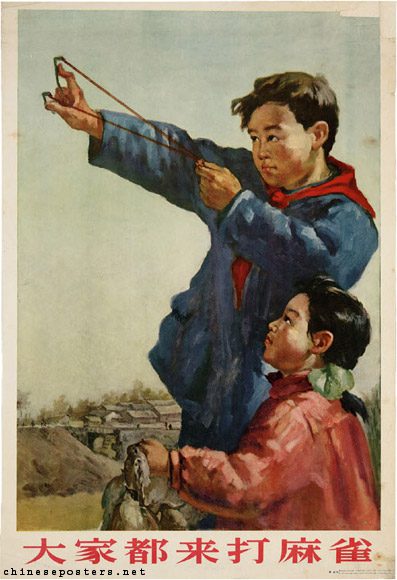Second-order thinking is a useful mental model to make better decisions in life.
First, a story from China will show you why it’s crucial to use second-order thinking for major decisions.
Then, you’ll find practical tips on how to apply second-order thinking.
Every decision has consequences
When Mao Zedong declared war on sparrows with Four Pest Campaign in China, the plan was simple.
Since sparrows eat lots of grain seeds and fruits, getting rid of them would increase rice yields. The nutrition of the big population was a serious problem for the new regime, so their aim was to solve it once and for all.

Mao’s government organized people to destroy sparrow nests, break their eggs and kill them with slingshots and stones.
They even went as far as hitting noisy pots and pans to prevent sparrows from resting in their nests, causing them to die from exhaustion.
With all these measures, the government achieved the target; sparrows became almost extinct.
But consequences also have consequences
Sparrows indeed eat a lot of grain seeds and fruits, but they also eat a lot of insects. The extinction of sparrows caused a huge increase in the locust population. So instead of an increase, yields dropped significantly in China.
The decision to declare war on sparrows was one of the main reasons for the Great Chinese Famine, killing 15 to 50 million people.
In the end, the government had to change the policy and import sparrows from other countries to balance nature again.
The mistake of Mao’s government was a lack of second-order thinking. They made the decision thinking only about the first-order consequences (fewer sparrows = more yields), which ended up with a disaster.

How to use second-order thinking
You will face many decisions in life that appear easy decisions. Don’t rush to make the decision.
Think about the consequences and ask “then what?” multiple times. Only after applying second-order thinking can you conclude what’s the right option for you.
Use the questions below to identify the second-order consequences of your decisions:
- What is the range of possible outcomes?
- Which outcome is more likely?
- What will be the possible effects of different factors (social, financial, emotional, etc.)?
- How does this decision fit into the bigger picture?
- How will you feel about it after 10 minutes, 10 months, and 10 years? (10-10-10 rule)
- Is there a potential consequence that I should avoid at all costs?
Moving to a new city, considering a job offer, or starting a new business. Use second-order thinking for your important decisions.
It will remove the blind spots, so you can make the best decisions for yourself.
–
Enjoyed this article?
Then you’ll love the How Brands Win Newsletter.
Get the “5 Mental Models to Differentiate Your Business” guide when you join. It’s free.
Recommendations:
Book: Howard Marks came up with the second-order thinking concept in his book “The Most Important Thing” on investing and decision-making.
